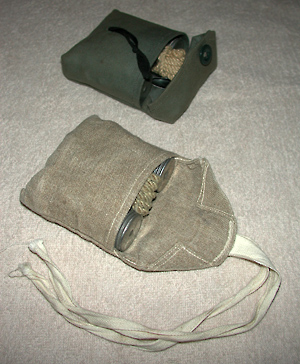Miscellaneous Accessories
The Cleaning Kit
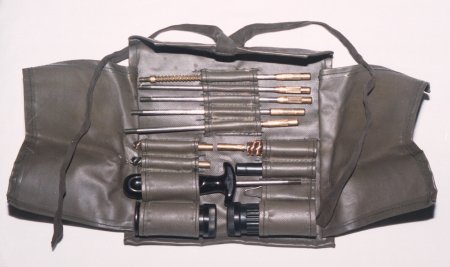
|
This cleaning kit was issued for the Stgw57 (aka PE57). |
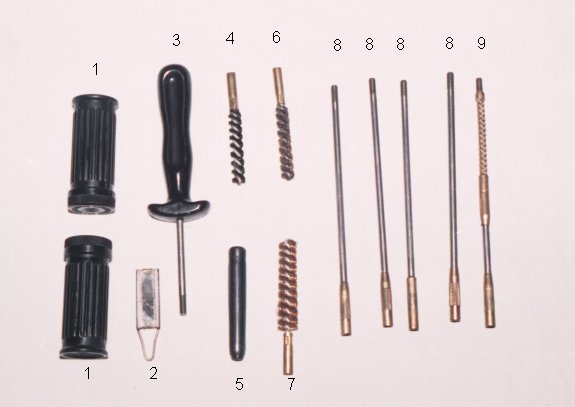
1. Grease Cans
2. Bore Mirror
3. Cleaning Rod Handle
4. Nylon Brush
5. Chamber CLeaning Jag
6. Brass Brush
7. Brass Bore Brush
8. Cleaning Rod Segments
9. Cleaning Rod End, with Patch Jag
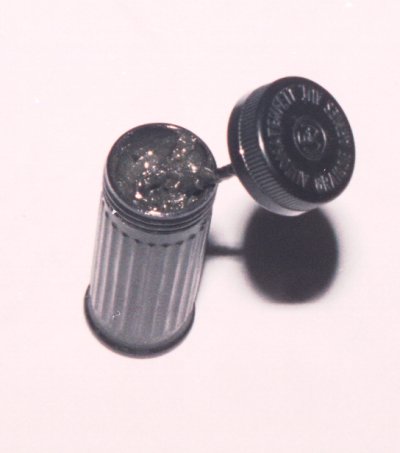
Close-up of grease can.
The text on the can reads
"AUTOMATENFETT GRAISSE ARMES AUT."
The above phrase is a mixture of German and French.
AUTOMATENFETT is German and traslates to Grease for Automatic
GRAISSE ARMES AUT is French and translates to Grease for automatic
firearms
Inside the circle on the center of the lid the is an F+ over a W
Which is the proofmark of the Swiss Waffenfabrik Bern
Thanks to Andreas Beules for translating, and
Thanks to Mark Adkins for IDing the proofmark.
The cleaning procedure for the kit above is as follows:
1. Make the rifle safe. Remove the magazine and bolt.
2. Assemble the cleaning rod and attach the brass brush with a small
amount
of the black grease on the tip of the brush - from the chamber end, make
5
passes through the barrel.
3. Remove the brass brush and attach the brass cleaning jag with a 100%
cotton patch (about 5cm x 5cm square). Run patches through the bore until
they come out clean.
4. Using the cleaning rod handle and one rod section, attach the large
chamber brush with a very small amount of grease at the tip. Scrub the
chamber area thoroughly with the brush - about 5 passes should clean the
area.
5. Remove the chamber brush and attach the chamber jag with a (20cm x
20cm
square) cotton patch slid into the slot cut into the jag. Insert this
into
the chamber area and wipe thoroughly and repeat until subsequent patches
come out clean.
6. Reassemble the entire rod and handle - attach the nylon brush and
(lightly) coat with the black grease. Run this brush through the bore to
apply the grease to the bore and chamber area.
7. The bolt should be disassembled and all parts wiped clean. It is
preferable to use oil or the light-colored grease on the bolt as opposed
to
the black grease. The remainder of the weapon should be wiped clean and
oiled.
8. The magazine should be disassembled and cleaned as it accumulates
firing residue.
*****Remember to remove the grease from the bore before firing the weapon*****
The Stg. 57 had a cleaning kit containing a rod (in sections), a brass brush, 2 tins of grease and an attachment to hold patches. In essence, the cleaning method was the same as above. No "sieve" though and it was a one man job."
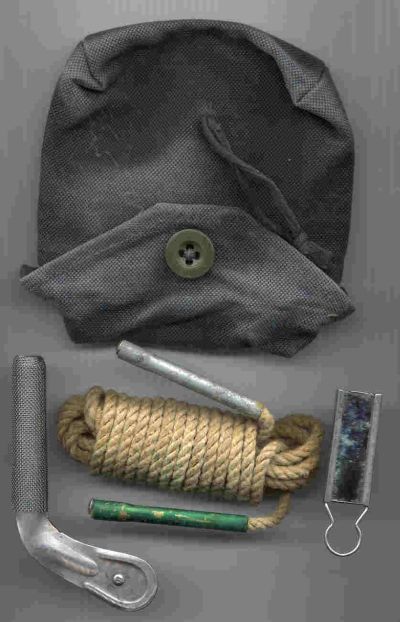
Photo courtesy of Cliff
| Above is a second type of cleaning kit. This kit uses a pull-through
(middle) rather than a cleaning rod. The the left is a chamber brush,
and to the right is a bore mirror. The carrying case is at the top
of the photo.
Pictured above are a Model 1911 Cleaning Kit (Top)
|
Instructional Shooting Kit
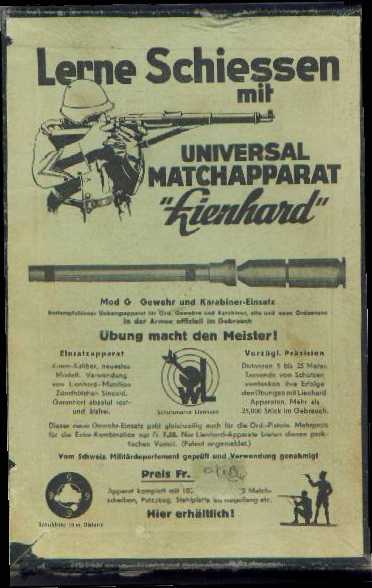
This kit is intended for indoor or instructional purposes.
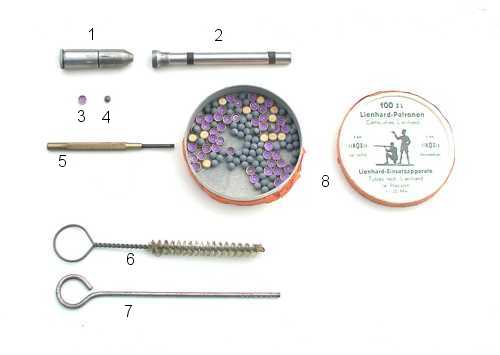
It consists of a chamber insert (1), a barrel insert.(2), primers (3), pellets (4), a screwdriver (5), a cleaning brush (6), a ramrod (7), a small carboard container to hold the pellets and primers (8) and a target (see below).

The assembly works by seating a pellet and the bore end of the barrel insert, then pushing the barrel insert into the chamber.
![]()
Then, the top of the chamber insert is removed, and a primer is place in the cup. The insert is then chambered in the rifle.

The practice pellet has a range of 5 to 20 yards.
Muzzle Cap
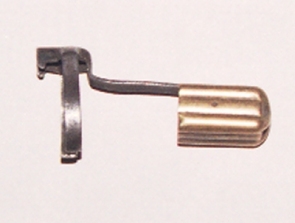
Muzzle Cap for the Models 1889,96/11, and 1911 Rifles
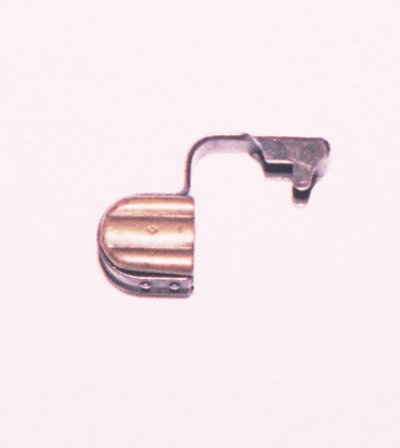
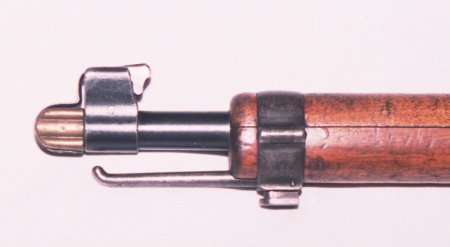
This cap fits the K31 & the 1911 Carbine.
Ammunition Pouch
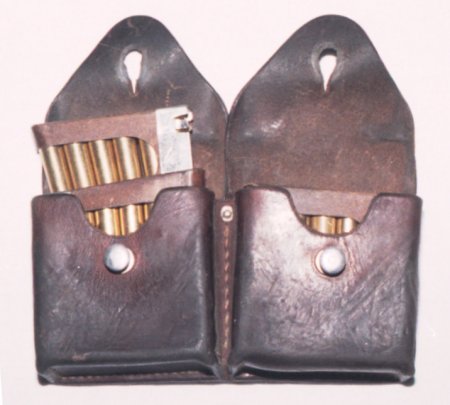
The pouch holds four 6 round clips of 7.5 ammo
For questions or comments - Contact Information
